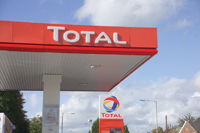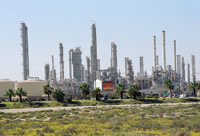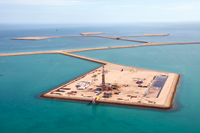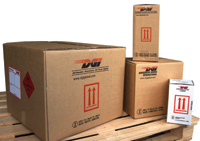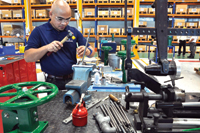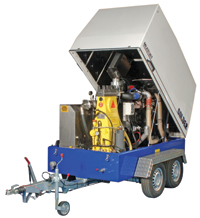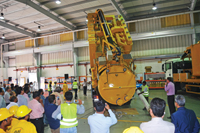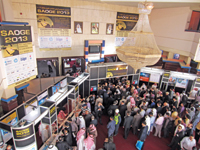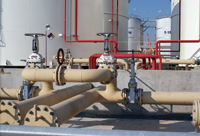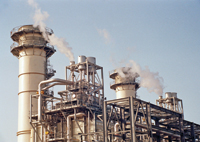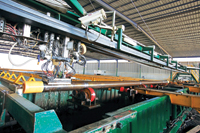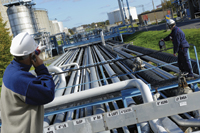
 Satorp ... expansion plans under way
Satorp ... expansion plans under way
ALTHOUGH plans are well advanced for constructing one of the world’s biggest combined cycle petrochemicals plants in the kingdom, being built by the Sadara Chemical Company (a joint venture between the state oil company, Saudi Aramco, and Dow Chemical of the US), in reality the petrochemicals sector has mostly taken a back seat in the country’s rapid industrialisation of recent years. This is primarily due to the shortage of ethane-rich associated gas and natural gas liquids (NGLs), which are both linked to crude oil production. However, this may well change if a new strategy planned by Saudi Aramco bears fruit.
In an indication of the new approach, Saudi Aramco and a joint-venture partner, France’s Total, are planning to carry out a feasibility study in October to expand the 400,000 barrels per day heavy-oil refinery at Jubail in Eastern Province that was started up. The expansion is strategic not just for both companies, but also for the kingdom at large, as it will serve as a litmus test for producing significantly higher volumes of naphtha either to partly offset or to replace in full the use of natural gas or natural gas liquids as feedstock for petrochemical products.
Undoubtedly, for the past few years the biggest stumbling block for building a downstream hydrocarbons industry has been the availability of feedstock gas. However, an expansion of the Jubail refinery could throw up options for Aramco to extract naphtha from that facility-which could in turn be supplied for new multi-feed crackers.
A multi-feed cracker is a facility that can operate using either ethane-rich gas or naphtha as feedstock. The first such facility in the Middle East is being built by the Sadara Chemical Company for its chemical plant at Jubail Industrial City. This will soon be followed a similar facility in Qatar, being built in a joint venture between Qatar Petroleum and Royal Dutch Shell for their olefins project at Ras Laffan.
Besides emerging as a new feedstock source, the use of naphtha will result in yet another benefit that is more commercial in nature: compared with a natural gas/NGL cracker, a naphtha cracker can produce a much greater variety of chemicals, such as ethylene, propylene, butadiene, and a full slate of aromatics such as benzene, toluene and mixed xylene.
Aramco has labelled its new programme as “downstream refinery integration”, and the expectation is that after Jubail, Aramco will start similar projects for the Yanbu, Jizan and Ras Tanura refineries. Reinforcing this expectation, Aramco and the Saudi Basic Industries Corporation (Sabic) have already selected Yanbu, Ras Tanura and Jizan Economic City as the new locations where they will invest first in infrastructure to create a platform for both private Saudi and international players to invest in new facilities. The three sites are already home to crude oil refineries, providing easy access to feedstock.
The Aramco-Total feasibility study should indicate the volumes of naphtha that can be “stripped out” of an expanded Jubail refinery, and, if the report is positive, Fluor of the US and Australia-based WorleyParsons have indicated that there may well be potential to build at least six new world-scale crackers, each with a capacity of some 2 million tonnes per year. That figure could increase further, if Aramco’s efforts to tap into the kingdom’s shale gas resources are successful, and also if non-associated gas is discovered in the Red Sea and the Western region.



































































